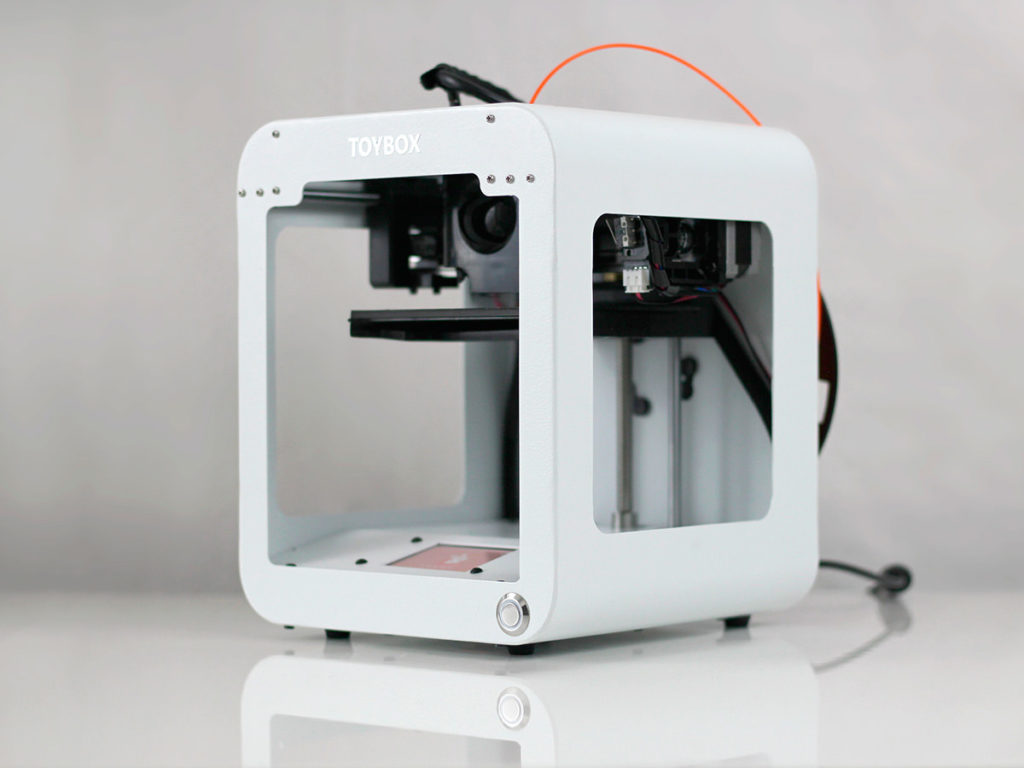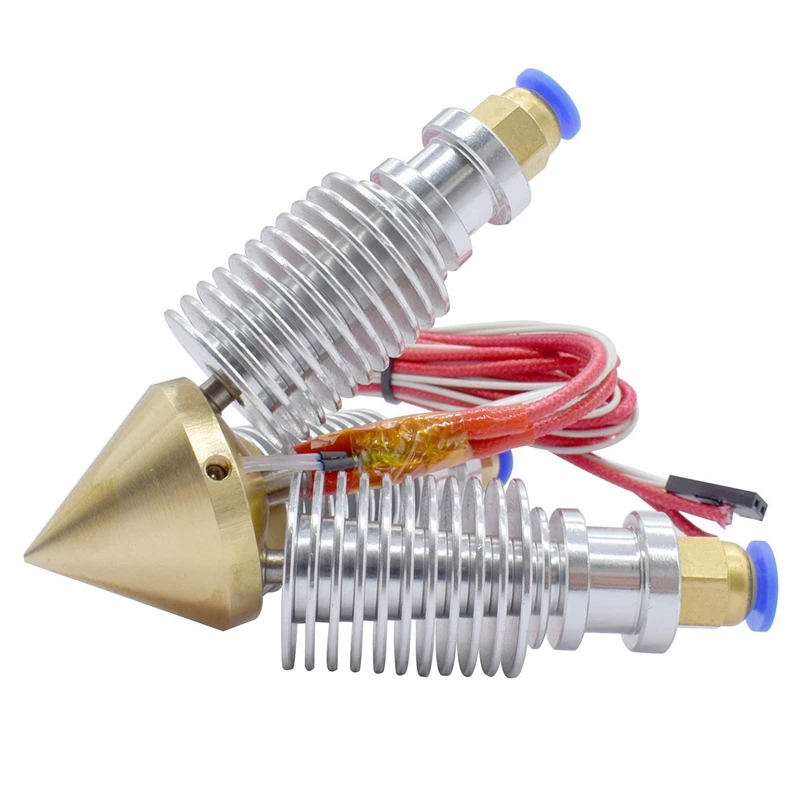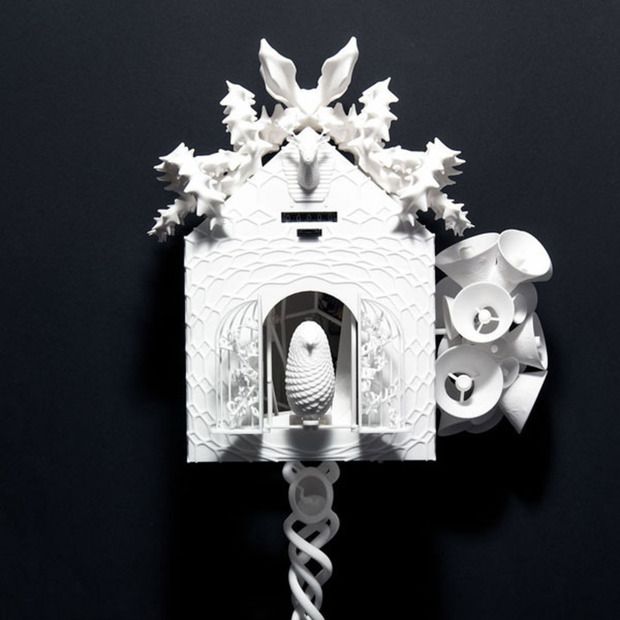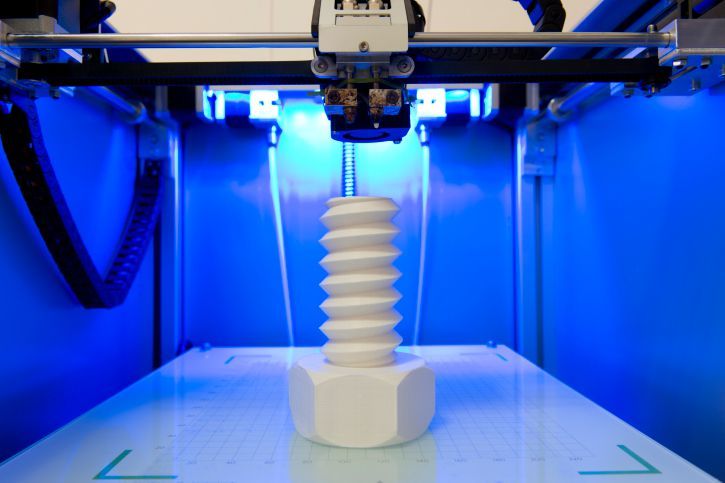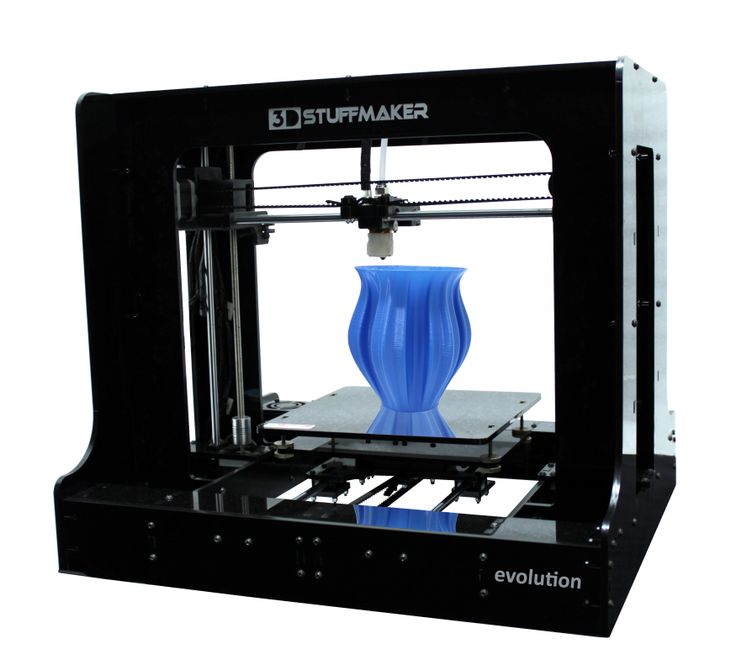3D printer automotive industry
How is 3D printing used in the automotive industry?
For the past few decades, 3D printing in the automotive industry was primarily used by carmakers to create automotive prototypes to check their form and fit. Is it still so today? What are the other applications of the 3D printing technologies that could benefit the industry?
Quick navigation
- Impact of 3D printing in the automotive industry
- Core applications of additive manufacturing (AM) in the automotive industry
- Advantages of 3D printing in the automotive industry
- 3D printing software in the automotive industry
Electric cars and self-driving cars have already become a part of our lives, as well as cloud-to-car mapping systems and driver behavior monitoring systems which are valued by drivers and insurance companies alike. The dynamic economic environment and more and more demanding consumers are making automakers look for new opportunities and materials to catch up with other industries. This is an environment where necessity breeds innovation.
Deloitte University experts recently shared how additive manufacturing (AM) technologies, commonly known as 3D printing, and their advances “have transformed the potential ways in which products are designed, developed, manufactured, and distributed”.
Impact of 3D printing in the automotive industry
For the past few decades, 3D printing in the automotive industry was primarily used by carmakers to create automotive prototypes to check their form and fit. The first technology for building parts was selective laser sintering or binder jetting. This allowed automakers to create aesthetically pleasant parts, but they were weak and could not be used long.
According to engineering.com, today there are more robust technologies for automotive 3D printing, such as fused filament fabrication (FFF), which can be used not only for the production of prototypes but also for end-use parts.
3D printing for automotive parts can be a game-changer in the industry.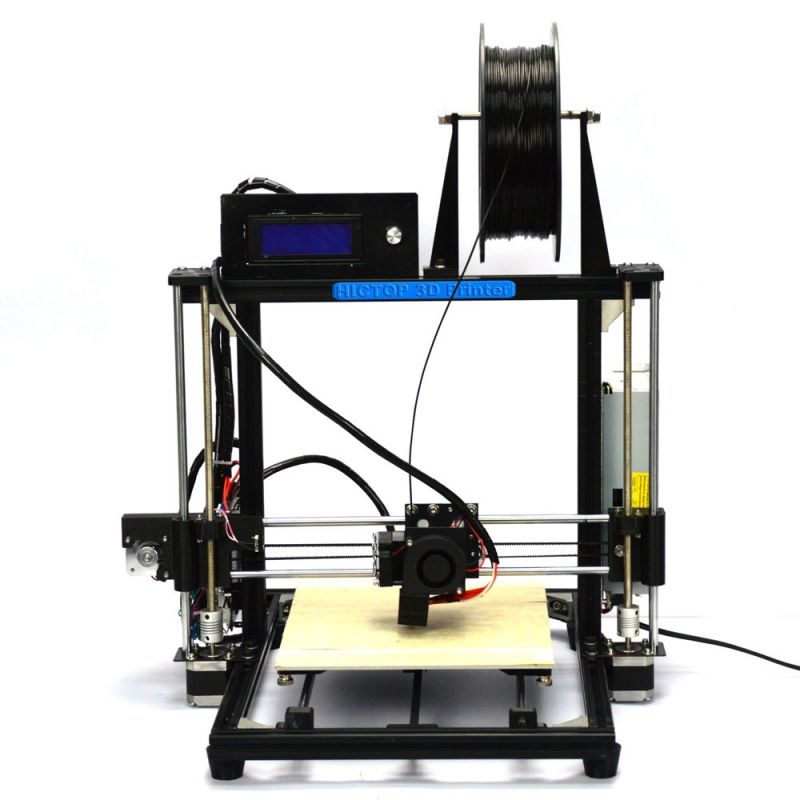 The Global Automotive Outlook 2017 projects that “the global automotive industry is set to reach 114 million in worldwide sales annually by 2024”. This market has very high barriers of entry as it is dominated by just a few OEMs.
The Global Automotive Outlook 2017 projects that “the global automotive industry is set to reach 114 million in worldwide sales annually by 2024”. This market has very high barriers of entry as it is dominated by just a few OEMs.
The parts and accessories market looks different. There are a lot of large scale and smaller players and the competition there is very high. It is projected that this market will reach around US$ 17 Bn by the end of 2025.
And, last but not least, according to Machine Design, consumption of 3D printing materials by the automotive industry will reach around $530 million by 2021.
Core applications of additive manufacturing (AM) in the automotive industry
| Design and concept of communication | High detail, smooth and accurate 3D printed scale models are very often used in the automotive industry to demonstrate designs and concepts of new vehicles. The reason is simple – using CAD models alone is not effective enough to define possible design problems. Such models are also used for the aerodynamic testing of new models. Such models are also used for the aerodynamic testing of new models. |
| Prototyping validation | Like in many other industries, prototyping is a very important part of the manufacturing process in the automotive sector. 3D printing allows for rapid prototyping in the pre-manufacturing stage. Using AM now is one of the most popular ways to validate a prototype – from a small quickly printed detail to a high detail full-scale part suitable for performance validation and testing. |
| Preproduction sampling and tooling | The specialists of 3D hubs regard this application as the most promising. 3D printing can be used to make molds and thermoforming tools, rapid manufacturing of grips, jigs, and fixtures. This allows automakers to produce samples and tools at low costs and to eliminate future losses in production when investing in high-cost tooling. |
| Customized parts | Additive manufacturing is used by automotive enterprises to tailor the parts to specific vehicles (making them custom and lightweight) or even drivers (e. g. seats for racing cars). This is especially useful when the cost of such unique components is justified by a substantial improvement in vehicle performance. g. seats for racing cars). This is especially useful when the cost of such unique components is justified by a substantial improvement in vehicle performance. |
As we see, 3D printing can be a key to car model evaluation and cost-saving for automakers. What else can it do for this industry?
Advantages of 3D printing in the automotive industry
Printing solutions for the automotive industry provide benefits that can be easily evaluated in terms of performance characteristics. 3D printing can replace expensive and long lead-time CNC production. 3D printed plastic parts are cheaper and their production time in-house is shorter. And this means reductions in production costs, especially when dealing with the manufacturing of complex bodies.
In-house 3D prototyping can also help to control Intellectual Property (IP) infringements or information leaks as everything is produced on-site. 3D prototyping can also significantly reduce turnaround times across all stages of manufacturing allowing more agility.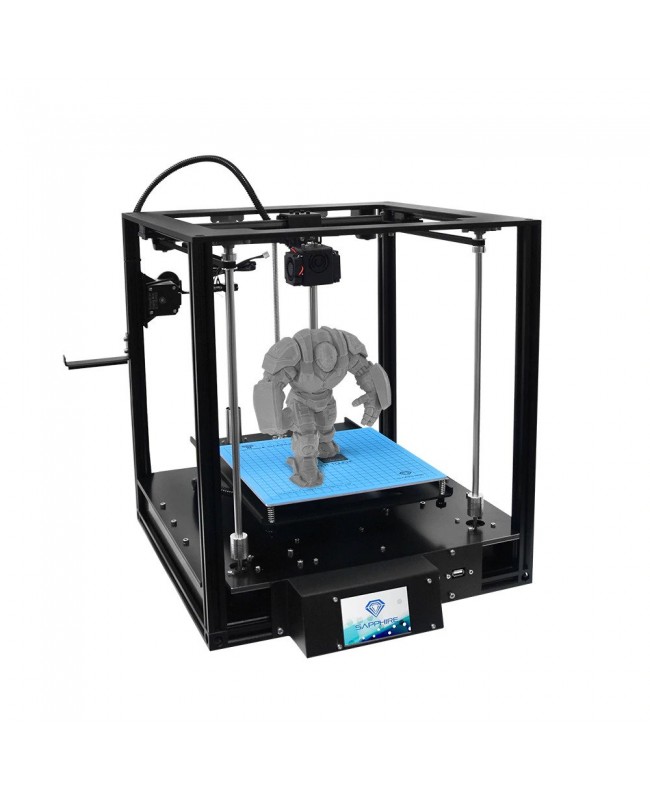 Unlike traditional approaches to vehicle design (this refers both to cars and trucks) where a variety of materials are used, 3D printing in automotive design allows lower consumption of materials and wastage which is beneficial for all stages of manufacturing.
Unlike traditional approaches to vehicle design (this refers both to cars and trucks) where a variety of materials are used, 3D printing in automotive design allows lower consumption of materials and wastage which is beneficial for all stages of manufacturing.
3D printer assisted design in the automotive industry allows designers to try multiple options of the same detail and iterations during the stages of new model development. It brings more flexibility, which results in efficient designs and flexibility in making changes in design throughout the process of model evaluation. This, in turn, helps auto manufacturers stay up to date with market needs and be ahead of the field.
By now, we’ve found out the possibilities and advantages of 3D printing in the automotive industry. But, let’s keep in mind that there are two components of this advantage – 3D printers and software for 3D printing. So what does it look like and how can a company build 3D printing software for the automotive industry?
3D printing software in the automotive industry
3D printing allows for more efficient car model design, prototyping, testing and production using industrial 3D printing software.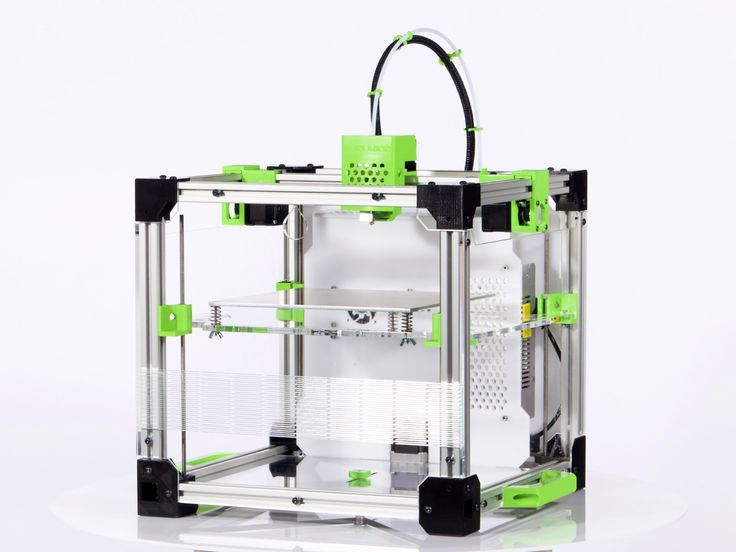 This software enables designers to create printable designs which are the first crucial step in creating 3D printed automobile parts, and the core of the printing process.
This software enables designers to create printable designs which are the first crucial step in creating 3D printed automobile parts, and the core of the printing process.
To use all the capabilities of a 3D printer, you need to have 3D printer control software and 3D editors that allow the equipment to perform specific tasks. All the software must comply with certain standards, i.e. it must “grasp” various formats of necessary data input.
As a rule 3D printer software uses:
- STL language (to describe the surface of the set model triangles are used)
- X3D language (the count starts from the preset profile, it is built on XML standard)
- VRML standard (based on triangles that do not have common points)
Before we turn to the off-the-shelf solutions overview, let us point out that custom-built 3D printing software and particularly 3D printing workflow management software is an efficient tool to produce complex 3D components for the automotive industry, both for large OEMs and small companies manufacturing custom cars.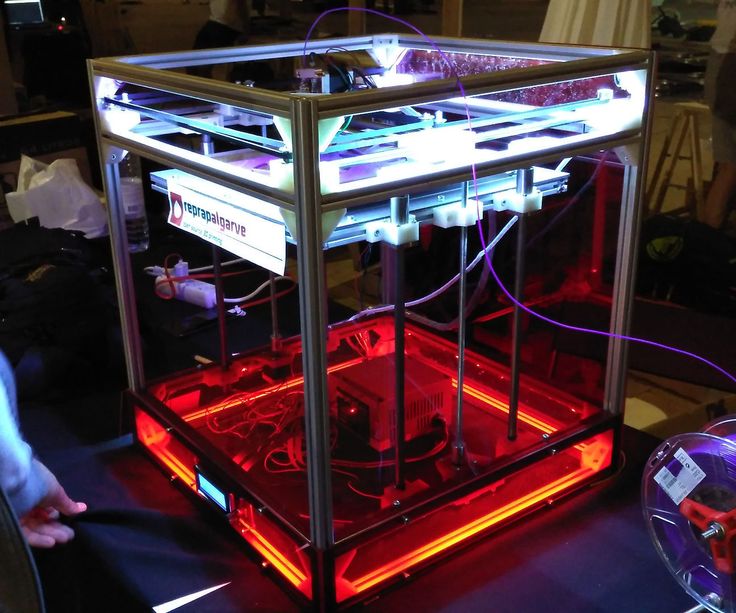
3D printing managed by a software that answers your own specific needs rather than the average of the whole industry can lead to more significant cost savings (personnel costs, assembly costs, inventory costs, etc.) and a substantial decrease in production time. 3D printing software can automate the production process and ensure lean manufacturing.
According to nanalyse.com, the key 3D printing management players existing in this market, which in fact is not overcrowded, are:
- Autodesk
With its market cap of $16.66 billion, this software package offers a couple of products valued by the 3D industry: Netfabb (a software for preparing files for 3D printing) and Project Dreamcatcher (a design program).
Netfabb allows the conversion of 3D models into more complex geometries (for example, lattice-filled shapes) which makes them more lightweight while maintaining structural integrity. Dreamcatcher can generate dozens of geometrically complex versions of a solid shape allowing the selection of shapes that would fit a certain application best.
- Materialize
With its market cap of $346 million and working with the majority of players in the 3D printing market. This company provides 3D printer manufacturers with print drivers (Build Processor) and a #D printing software suite for managing the overall printing process from model preparation to robotics automation.
- Stratasys
With a market cap of $1.132 billion it is also a well-known additive manufacturing market player which specializes in automotive applications. This company provides CAD solutions for manufacturing, prototyping, tooling, and production and maintains its own online community for professional designers, engineers, manufacturers, and students.
- SolidWorks by Dassault Systemes
With a market cap of $20.2 billion it is a 3D CAD software for designing parts and assemblies. SolidWorks product development solutions integrate 3D design with simulation, offering automakers the ability to make parts faster and cheaper.
- Siemens
Holding a market cap of $87.34 billion it also has some CAD tools for 3D printing, such as Siemens SolidEdge and NX. SolidEdge parametric solid modeling software is intended to design individual components and assemblies. NX is used by the automotive industry to create entire environments, i.e. to design parts and to simulate the part behavior, analyze the elements and prepare them for manufacturing.
- PTC
Having a market cap of $5.49 billion also offers mid-level 3D CAD software and solutions intended for parts design, such as Creo software for parametric CAD modeling. Though this company is much smaller than the “monsters” of the industry, PTC is among the four leading developers of CAD software.
In addition, it should be mentioned that there are a handful of successful startups and small software developing companies that offer paid and open-source 3D CAD products.
Contact our team at studios-info@cprime. com for more information.
com for more information.
9 Ways 3D Printing is Changing the Automotive Industry
Although you won’t be able to buy a 3D printed car at the dealership just yet, 3D printing has for many years been a vital part of the development process for automobiles. Recently, however, we’re starting to see 3D printing use cases gain a foothold throughout manufacturing.
3D printing can add enormous value to supply chains, unlocking a broad spectrum of production applications. The technology is growing more workable and affordable, with companies able to bring additive manufacturing in-house to support processes on the factory floor. New, resilient materials are opening opportunities for producing high precision, functional 3D prints that can stand in for final parts and offer (mass) customization opportunities and high performance, but that’s just the beginning.
Read on to find nine key ways 3D printing is powering innovation across the automotive industry, from design to manufacturing and beyond.
Prototyping has historically been the most common use case for 3D printing in the automotive industry. Thanks to the vastly increased speed at which prototyping can be carried out using 3D printing, rapid prototyping has become virtually synonymous with 3D printing, and the technology has revolutionized the product development process.
With 3D printing, automotive designers can quickly fabricate a prototype of a physical part or assembly, from a simple interior element to a dashboard or even a scale model of an entire car. Rapid prototyping enables companies to turn ideas into convincing proofs of concept. These concepts can then be advanced to high-fidelity prototypes that closely match the end result, and ultimately guide products through a series of validation stages toward mass production.
Prototyping used to be time-consuming and expensive as a product goes through many iterations. With 3D printing, highly convincing, representative, and functional prototypes can be created within a day, at a much lower cost than with traditional manufacturing methods.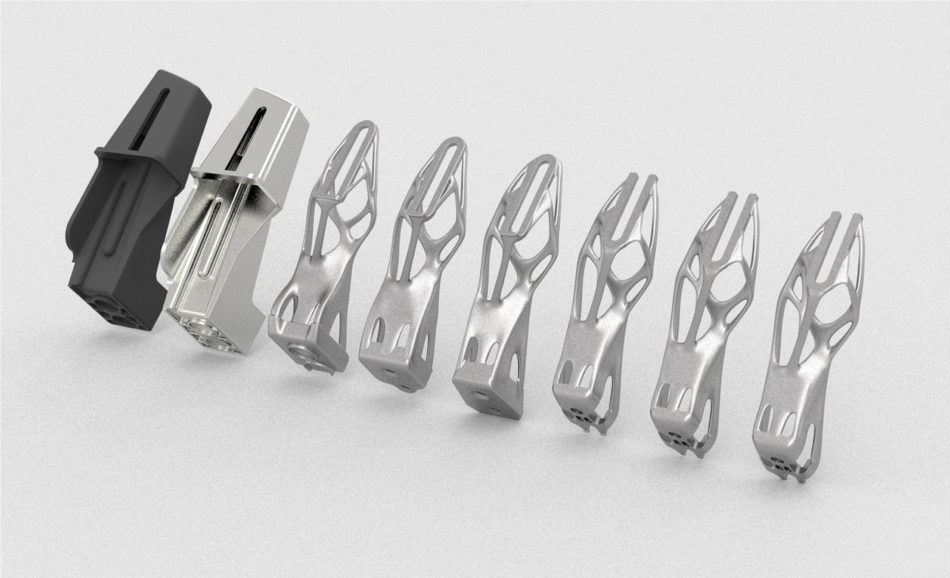 Desktop 3D printers allow engineering and design teams to bring the technology in-house in order to increase iteration cycles and shorten the distance between idea and final product, strengthening their overall product development workflows.
Desktop 3D printers allow engineering and design teams to bring the technology in-house in order to increase iteration cycles and shorten the distance between idea and final product, strengthening their overall product development workflows.
Ford designers used Formlabs 3D printers to prototype the lettering on the back of the Ford Puma in a matter of hours.
At Ford’s Rapid Technology Center in Merkenich, Germany, many 3D printing technologies are used to create prototypes with short turnaround times. Instead of sending out a job to a shop with a several-week lead time, engineers and designers are able to hold their designs in their hands in a matter of hours.
Designers are able to produce same-day prototypes in the Rapid Technology Center, iterating several designs in just a few hours. Physical prototypes can offer advantages over digital models, says Bruno Alves, additive manufacturing expert at Ford.
For instance, Formlabs 3D printers were used to prototype the lettering on the back of the Ford Puma, allowing designers to see how the lines and shadows would appear in different lighting conditions.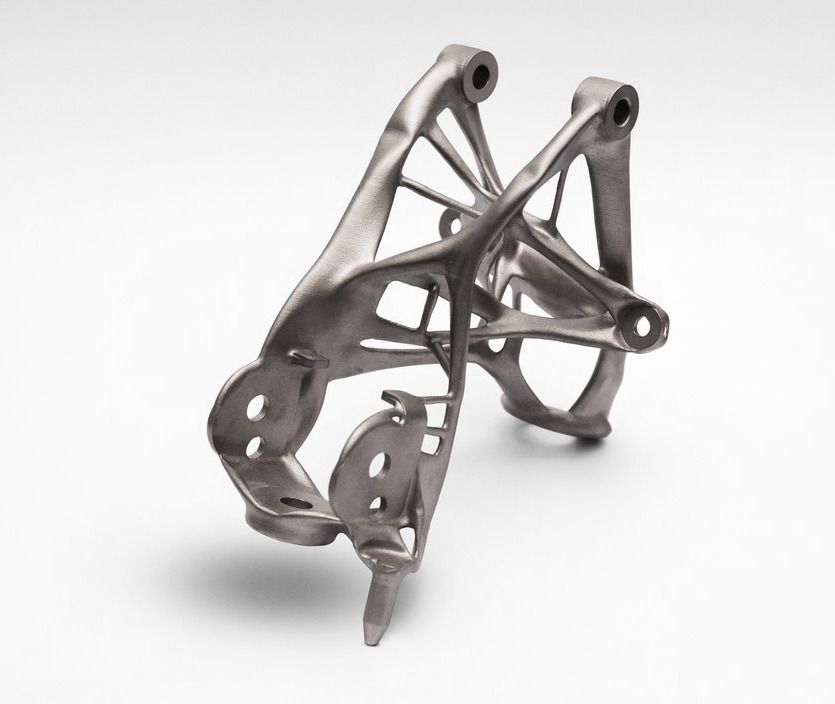 “The printer is so fast, and so effective for this kind of lettering, that we could supply the designers the option to iterate,” says Alves. “It’s a thing that you can see it in CATIA or other software, you can simulate lighting, but it’s different to feel, to touch, and to see all the reflections when you put the lettering on the car.”
“The printer is so fast, and so effective for this kind of lettering, that we could supply the designers the option to iterate,” says Alves. “It’s a thing that you can see it in CATIA or other software, you can simulate lighting, but it’s different to feel, to touch, and to see all the reflections when you put the lettering on the car.”
For more insight on how 3D printing is powering innovation at automotive giants, watch our webinar with Bruno Alves of Ford Motor Co. and Christian Kleylein of Brose.
WEBINAR
In this webinar, Christian Kleylein, Technologist at Brose, one of the largest family-owned Tier 1 automotive suppliers, and Bruno Alves, Additive Manufacturing Expert at Ford will share how 3D printing is powering innovation across the automotive industry, from design to manufacturing and beyond.
Watch the Webinar Now
IGESTEK is an automotive supplier in Spain specializing in the development of lightweight solutions using plastics and composite materials. Their team uses 3D printing throughout the product development process, from the conceptual design phase to verify geometries to the detailed design phase for the realization of functional prototypes. They also use 3D printing to manufacture rapid tooling, such as inserts for plastic injection molds or thermoforming tools for composites.
Their team uses 3D printing throughout the product development process, from the conceptual design phase to verify geometries to the detailed design phase for the realization of functional prototypes. They also use 3D printing to manufacture rapid tooling, such as inserts for plastic injection molds or thermoforming tools for composites.
Topology optimization is a hot topic in lightweighting. IGESTEK uses Autodesk Fusion 360 to generate multiple solutions based on a list of parameters.
For one suspension mount, the team developed a multi-material architecture that combines metal 3D printing based on generative geometries and lighter composite materials to offer the best performance, in a 40% lighter package than current solutions on the market. These parts were prototyped on the Form 3L, which is large enough to prototype multiple designs simultaneously for even faster iteration and testing.
For more details on this application, plus two other ways IGESTEK lightweights automotive parts, read our story with IGESTEK.
Webinar
In this webinar, Formlabs Product Marketing Lead Jennifer Milne will provide a simple overview explaining what generative design is, framed in a way that is applicable to mechanical part design, including a step-by-step tutorial of Fusion 360 where she’ll produce a lightweight bracket.
Watch the Webinar Now
Vital Auto is an industrial design studio in the UK that works with major car brands, such as Volvo, Nissan, Lotus, McLaren, Geely, TATA, and more. When the original equipment manufacturers (OEMs) don't have time for experimentation themselves, they come to Vital to turn ideas, initial sketches, drawings, or technical specifications into a fully realized physical form.
“We've used 3D printing from day one. We wanted to introduce it to our manufacturing processes, not only to reduce costs, but to give the customer more diversity with their designs and their ideas,” said Anthony Barnicott, Design Engineer in charge of additive manufacturing.
Today, Barnicott runs a whole 3D printing department, including 14 large-format fused deposition modeling (FDM) printers, three Formlabs Form 3L large-format stereolithography (SLA) 3D printers, and five Fuse 1 selective laser sintering (SLS) 3D printers. “In terms of capacity, all those printers have run 100%, 24/7, pretty much since day one. We use these printers for all areas of our concepts and designs. Typically, we use the Fuse 1s for our production-based parts and we use our Form 3Ls for our concept-based parts,” said Barnicott.
3D printing not only helps the team create better products faster, but also attracts new business. They found that many of their customers turn to them because they want to have access to the latest technologies and they want to have their components made using the latest cutting-edge materials.
“The progression in technology and 3D printing over the last 10 years is phenomenal. When I first started, producing low volume, niche vehicles, some of the products that we produce today would simply have been inaccessible.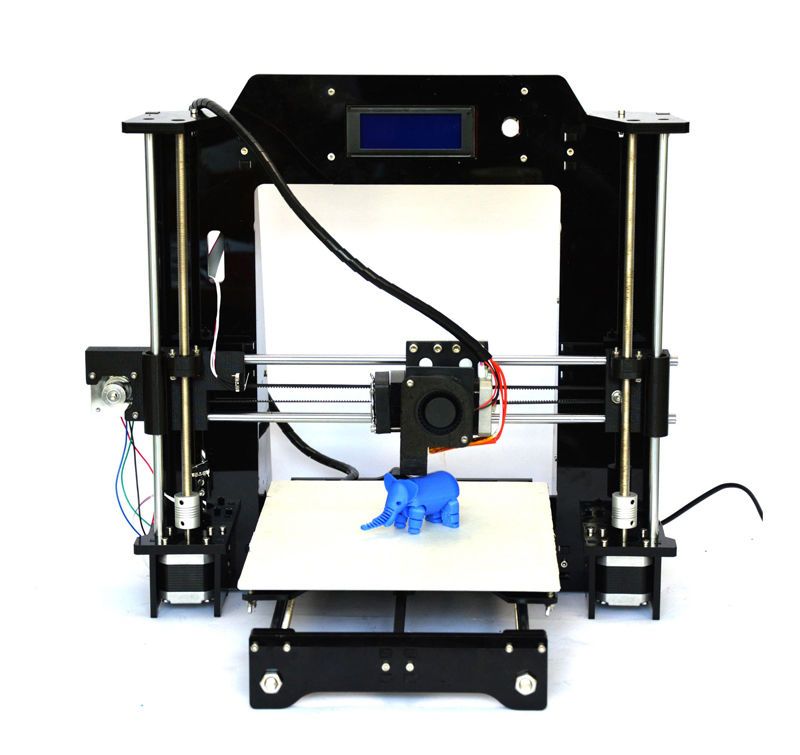 And not only am I able to produce these parts today, but I’m also able to produce them very cost-effectively, very quickly,” said Barnicott.
And not only am I able to produce these parts today, but I’m also able to produce them very cost-effectively, very quickly,” said Barnicott.
For more insights on specific applications with 3D printed parts, check out our in-depth story with the Vital Auto team.
White Paper
In this guide, you’ll learn how rapid prototyping fits into the product development process, its applications, and what rapid prototyping tools are available to today’s product development teams.
Download the White Paper
Thanks to the rapid development of 3D printers and high-performance materials, additive manufacturing can now be used to produce parts that are up to the challenge of extreme environments.
3D printing can be leveraged in manufacturing to reduce overhead and increase efficiency with manufacturing aids like custom jigs and fixtures and produce low-volume rapid tooling for traditional manufacturing processes like injection molding or thermoforming.
3D printed end-use parts are also increasingly common in the automotive industry, especially for applications like aftermarket, custom, or replacement parts, where other means of production would be excessively costly and slow.
Makra Pro developed a novel technique for molding leather trim pieces using 3D printed dies.
Makra Pro is an additive manufacturing service provider that has developed a novel process for molding leather, a popular trim material in luxury cars that can be difficult to shape, using 3D printed dies. In partnership with some of their clients, including manufacturers of luxury cars, motorcycles, and motor homes, they have tested a method for shaping and embossing real leather.
Using molds printed on a Form 3, Makra Pro’s technique uses expanding foam to equally distribute pressure across a panel of stretched leather. As the foam hardens, the leather is pressed into the die and takes on its shape.
The finished leather parts can then be, for example, stretched over the door panel in a car or attached to the seat cover in a vehicle.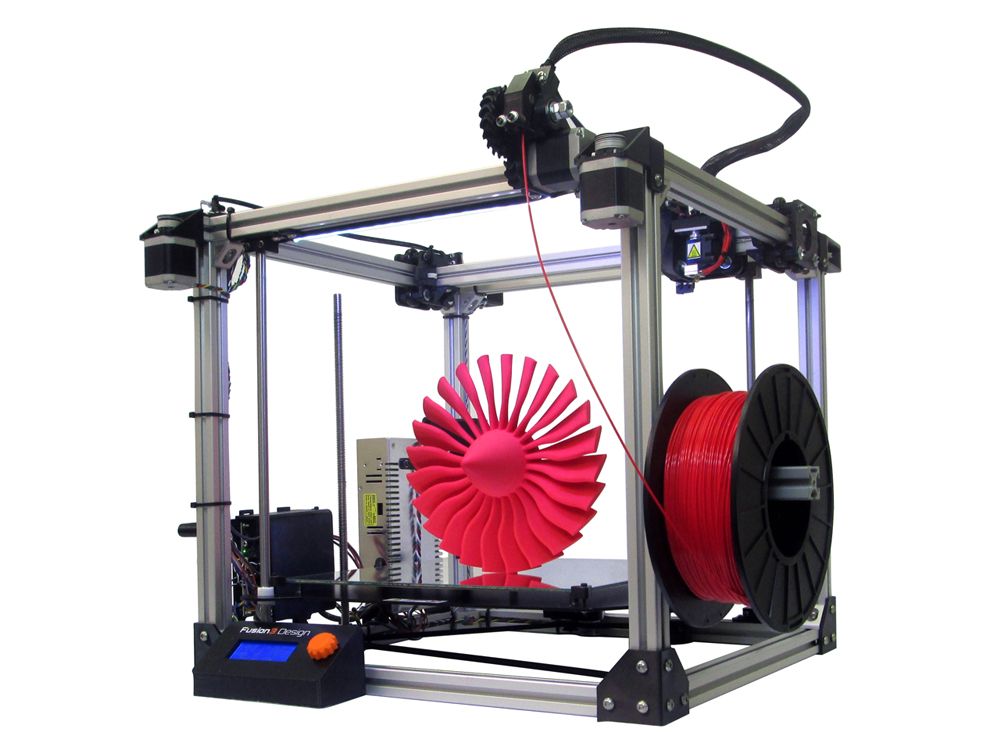 One well-known tuning company of limited-edition luxury automobiles uses these molded leather parts for wall or ceiling panels in vehicle enhancements.
One well-known tuning company of limited-edition luxury automobiles uses these molded leather parts for wall or ceiling panels in vehicle enhancements.
Read our in-depth story with Makra Pro or download our white paper for more rapid tooling applications, including injection molding, thermoforming, and more.
White Paper
In this white paper, learn how to combine rapid tooling with traditional manufacturing processes like injection molding, thermoforming, or casting.
Read the White Paper
Dorman Products produces go/no-go test jigs with Grey Resin that are accurate to +/- 0.05 mm.
Dorman Products designs and manages a database of more than 100,000 parts for hundreds of different vehicles. “Historically we’ve released between 4,000 and 5,000 new parts each year,” says Mechanical Design Team Manager Eric Tryson.
In addition to the sheer logistical challenge of operating as an aftermarket supplier, Dorman’s product design and manufacturing teams need to be particularly agile, says Additive Manufacturing Lead Chris Allebach.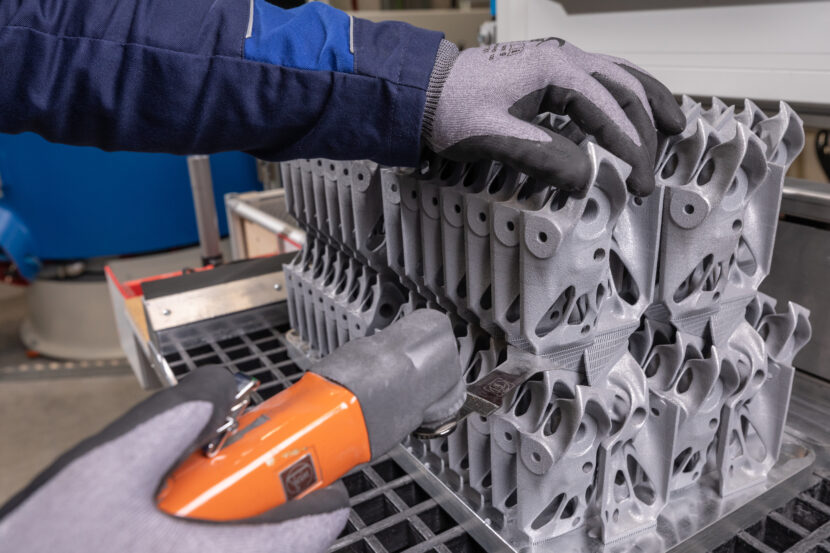 “The OEMs have teams of people designing a single part, sometimes starting two years prior to a new car coming out. We need to find ways to ensure our replacements are reliable while also being fast to market.”
“The OEMs have teams of people designing a single part, sometimes starting two years prior to a new car coming out. We need to find ways to ensure our replacements are reliable while also being fast to market.”
Before integrating 3D printers into their workflow, the lack of custom test fixturing was an obstacle to quick development. Machining was prohibitively expensive and time-consuming.
“Now, with the 3D printers, we develop the test fixtures and gauges along with prototyping the product, so when we decide on a final design, we can have the fixture to test it as well. We’re trying to be as proactive as possible,” says Allebach.
Since Dorman acquired their first 3D printer ten years ago, Allebach and Tryson have added more printers steadily, continually maxing out capacity on their existing units, and utilizing the full materials library on their Formlabs SLA printers, including a large-format Form 3L.
“[Our first 3D printer] paid for itself within two months. When we’re doing the cost justification or an ROI for any of the Formlabs printers, we can justify the payoff in months instead of a two-year time frame. That gives our leadership confidence that 3D printing is a worthwhile investment,” says Tryson.
When we’re doing the cost justification or an ROI for any of the Formlabs printers, we can justify the payoff in months instead of a two-year time frame. That gives our leadership confidence that 3D printing is a worthwhile investment,” says Tryson.
Dorman Products is using 3D printing for several other applications. Read our article to explore them.
White Paper
For manufacturers, maximizing production speed while maintaining high part quality is critical for success. Jigs and fixtures are used to make manufacturing and assembly processes simpler, more reliable, and more efficient, reducing cycle times and at the same time improving worker safety.
Download the White Paper
BTI Gauges designs telemetry displays for high-performance cars.
Like many successful businesses, BTI Gauges started with a gap in the market. Brandon Talkmitt, founder and owner, was looking for a customizable approach to telemetry display for his high-performance car.
Talkmitt searched, unsuccessfully, for a gauge that contained multiple performance metrics, so his windshield wasn’t littered with multiple screens and distracting read-outs. He then began by prototyping the external casings of the gauges on a 3D printer and testing them out himself, subjecting the casings to high-heat environments inside cars and ovens, and modifying the design to complement multiple car models.
Right away, there was interest in his product from clientele driving 1990’s style Japanese race cars, Lamborghinis, Dodge Vipers, and other high-performance vehicles.
Talkmitt began evaluating other 3D printing options, including expensive plastic powder bed fusion 3D printers, resin 3D printers, and an inexpensive compact SLS option. But between the half a million dollar price tags on some, and the complex materials purchasing process from others, there just weren’t any options available. That is until he heard about the Fuse 1. “When I got the sample I thought, ‘Man, if my parts can look like this. ’ So I ran some tests, and figured out what kind of heat it could tolerate. Did the finishing and painting process on it, and everything worked,” says Talkmitt.
’ So I ran some tests, and figured out what kind of heat it could tolerate. Did the finishing and painting process on it, and everything worked,” says Talkmitt.
During the supply chain issues of the last two years, BTI Gauges faced several shortages of the touchscreen displays, and other components needed for their nine product lines. By bringing 3D printing in-house with the Fuse 1, he was able to pivot immediately to a new design, without having to spend thousands of dollars on new tooling, or dealing with a backlog of now-obsolete products.
“I would have been stuck with all that plastic, but with the Fuse 1, I could make the change on the fly. It was a 30-minute thing for me to change the files. Without it, I would definitely be stuck right now,” says Talkmitt.
Find out more about producing end-use aftermarket parts in our in-depth story with BTI Gauges.
White Paper
In this white paper, we evaluate the value proposition of bringing SLS 3D printers in-house, in comparison with outsourcing SLS parts from a service bureau.
Download the White Paper
3D printing is a toolless fabrication process that is a great match for motorsports and a powerful tool to achieve low-volume production and custom manufacturing rapidly and cost-efficiently. By eliminating tooling time and costs, it provides the flexibility to revise products quickly and accelerate time to market. It increases design freedom and gives the ability to customize products, and build complex shapes such as lattices without any additional costs.
By using in house 3D printing, motorsport teams can develop faster, keep their IP secure, test more ideas, and ultimately beat their competition.
Forge Motorsport’s redesigned duct reduced intake air temperature by 6° C.
Forge Motorsport, which makes aftermarket parts for performance cars, uses 3D printing to prototype their parts. When the Toyota Yaris GR was released, the engineers at Forge noticed a few opportunities to improve the inlet duct design—moving the airbox opening, and increasing the overall size of the part—that would reduce fluctuations in intake air temperature (IAT), which make it hard to anticipate engine performance, while reducing the average temperature overall.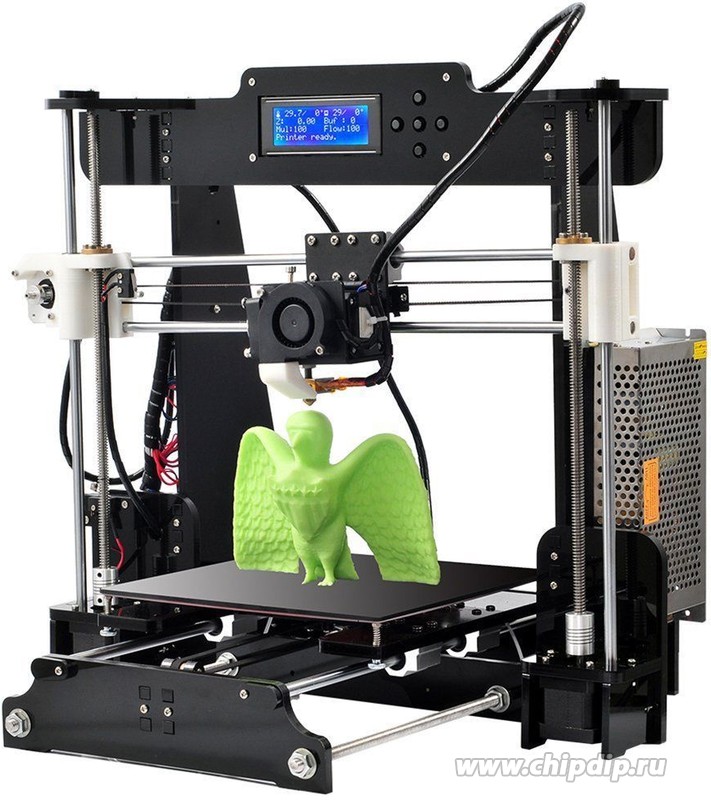
They reverse engineered the OEM part using 3D scanning and made the design changes virtually in SOLIDWORKS, where they were able to simulate airflow. Once they had a workable 3D model, they prototyped it in fast-printing Draft Resin, which they used to confirm that the new location for the airbox opening would work as intended and that the overall increased size of the part wouldn’t interfere with other components or cables. With basic fit confirmed, they reprinted the part in Tough 1500 Resin, a strong and impact-resistant material, painted it black to resemble the final part, and gave it to a customer to test.
The customer used the 3D printed part in his Yaris GR for five months, during which time he collected data on performance under different conditions, including on tracks and uphill climbs. The IAT on the stock part varied between 42-45 °C, with considerable variations observed during the course of a race; with the redesigned part, printed in Tough 1500 Resin, the customer measured IATs between 35-36 °C. As anticipated, the redesigned part had both lower overall IATs and reduced fluctuations. With this data in hand, confident that their part was an improvement over the OEM design, Forge moved forward into manufacturing the final production part with carbon fiber.
As anticipated, the redesigned part had both lower overall IATs and reduced fluctuations. With this data in hand, confident that their part was an improvement over the OEM design, Forge moved forward into manufacturing the final production part with carbon fiber.
For more on the reverse engineering workflow using 3D scanning, watch our webinar with Forge Motorsport and Peel3D.
WEBINAR
In this webinar brought to you by Formlabs, Solid Print3D, and peel 3d, we talk to Forge Motorsport, who manufacture performance upgrades for the aftermarket automotive industry such as valves, intercoolers, and actuators.
Watch the Webinar Now
By 3D printing molds in-house, TU Berlin’s competition team could drastically cut their costs and lead time for this carbon fiber part.
The Formula Student is a yearly engineering design competition in which student teams from around the world build and race formula-style cars. The Formula Student Team TU Berlin (FaSTTUBe) is one of the largest groups; 80 to 90 students have been developing new racing cars every year since 2005. The team added a Form 3 SLA 3D printer to their toolset that they have used to save time, reduce costs, and create carbon fiber parts that would be prohibitively expensive any other way.
The Formula Student Team TU Berlin (FaSTTUBe) is one of the largest groups; 80 to 90 students have been developing new racing cars every year since 2005. The team added a Form 3 SLA 3D printer to their toolset that they have used to save time, reduce costs, and create carbon fiber parts that would be prohibitively expensive any other way.
3D printing molds for composites allowed the team much greater flexibility, shorter lead times, and saved costs when designing key parts like the steering wheel chassis. Machining the mold for this part would have required sourcing expensive specialized tools, and outsourcing the molded part would have taken weeks and cost nearly €1000. Instead, 3D printing the mold in-house and laminating it by hand cost only €10 in materials and 1.5 hours of working time.
The team is also using 3D printing to prototype designs, lightweight parts, and even fabricate end-use parts. Read our story with them for more details on these applications.
3D printing has given the FaSTTUBe team new flexibility, design freedom, and cost savings. Additionally, students have gained experience fabricating prototypes, tooling, and even end-use parts for their project. These skills will stay with the students as they enter the workforce, bringing valuable experience to every discipline of engineering.
Additionally, students have gained experience fabricating prototypes, tooling, and even end-use parts for their project. These skills will stay with the students as they enter the workforce, bringing valuable experience to every discipline of engineering.
White Paper
Download this white paper for composite mold design guidelines and step-by-step guides to the prepreg and hand laminating methods to create carbon fiber parts.
Download the White Paper
The intake manifold, printed in Rigid 10K Resin, recorded a lower post-race temperature than the original aluminum part.
Andrea Pirazzini has been riding motorcycles since 2012. He wanted to challenge himself to design and fabricate a functional, safe 3D printed intake manifold for his own bike. In the past, he had tried using FDM printing technology, but the result was not what he hoped for, as the part was not airtight and compromised the engine’s function.
To develop the project, Pirazzini used 3D scanning and Autodesk Fusion 360 software to reverse engineer the design. The scan of the four-stroke engine (two-valve) engine with its frame and carburetor helped him to correctly size the manifold and then to position it optimally. With the use of CAD software, it was possible to align the diameter of the head inlet with the carburetor, avoiding steps and any pressure drop or turbulence.
The new manifold design was printed with the Form 3 using the Rigid 10K Resin at a 100 microns layer height, creating a smooth surface without visible layer lines. As for the finish, Pirazzini used classic water-based sandpaper to smooth the surface. Unlike an FDM manifold, which has to be treated externally and internally to be watertight, SLA printing creates solid and waterproof parts.
The manifold that Pirazzini printed with the Form 3 has withstood high and low temperatures perfectly and is still mounted on his pit bike. Thanks to the use of a thermal imaging camera, Pirazzini discovered that Rigid 10K Resin also offered a significantly better thermal performance: The 3D printed manifold with cooling fins recorded a 40-50 degrees Celsius lower temperature compared to a classic aluminum manifold. Moreover, after a race of about 20-25 minutes at an outside temperature of about 33 degrees Celsius, it was possible to touch the manifold without getting burned.
Moreover, after a race of about 20-25 minutes at an outside temperature of about 33 degrees Celsius, it was possible to touch the manifold without getting burned.
The project not only succeeded, but it even improved the function of the engine. Based on some improvements Pirazzini made to the original design, the engine had more horsepower (about one HP, almost 10% increase) available compared to the standard machined manifold, while remaining within the limits imposed by the rules of the championship.
Find out more about how Pirazzini developed the project in our detailed case study.
White Paper
3D scanning and 3D printing workflows can be applied to replication and restoration, reverse engineering, metrology, and more. Download our white paper to explore these applications and learn how to get started.
Download the White Paper
Amid the 3D printing hype of the early 2010s, excitement grew in popular media around 3D printing large-scale, complex assemblies, including entire 3D printed cars.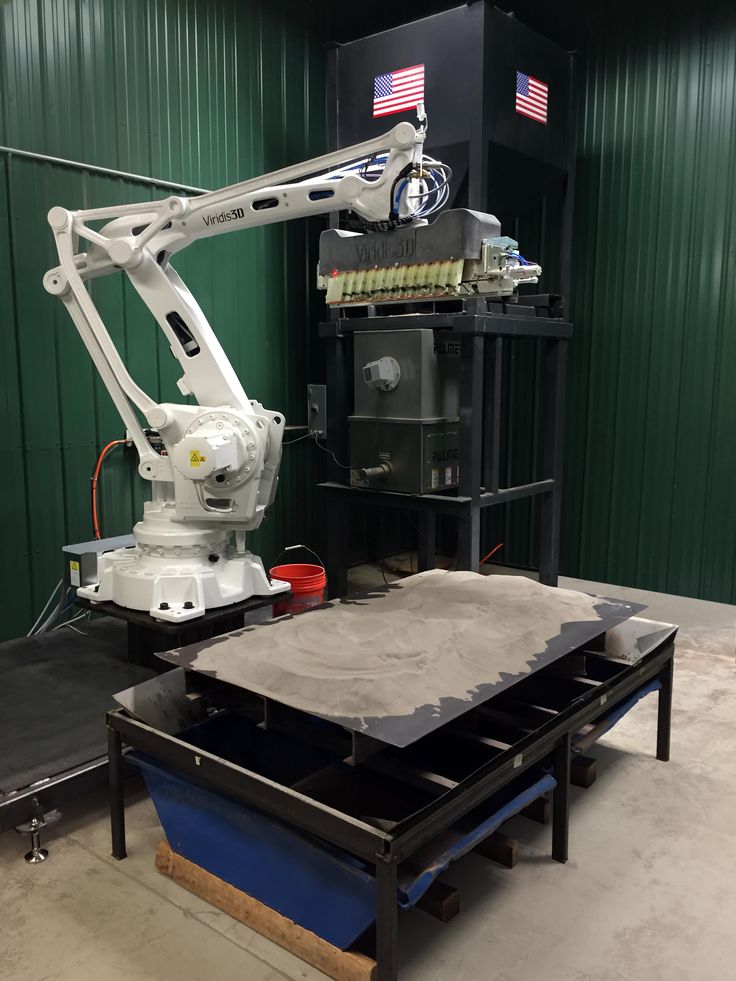 However, even the biggest proponents of “fully” 3D printed cars shifted focus to printing structural and trim components like the chassis, body, and seats, not the engine or other electromechanical assemblies.
However, even the biggest proponents of “fully” 3D printed cars shifted focus to printing structural and trim components like the chassis, body, and seats, not the engine or other electromechanical assemblies.
Some companies, including Local Motors and EDAG, created full concept cars where the chassis and body were 3D printed, exhibiting them to the public at trade events like SEMA in the mid-2010s. However, none of these projects reached serial production.
Besides weather resistance, the cover on EDAG’s Light Cocoon provides absolute freedom when it comes to design and individualization. (source: EDAG)
Currently, the projects and companies closest to serial production seem to be Divergent 3D and XEV.
Divergent 3D combines generative design and 3D printing to create custom-tailored components for auto parts manufacturers. Once a component is designed, it’s constructed using the company’s metal 3D printers. Their first public project is the Czinger 21C hypercar, while they’re also a supplier of major OEMs, including Aston Martin.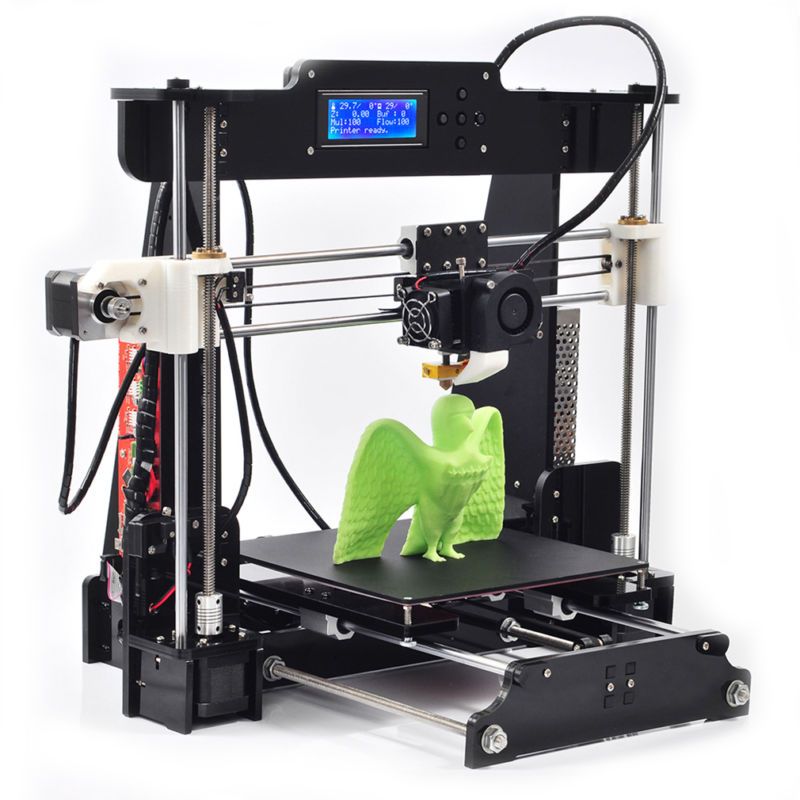
On the other end of the spectrum, the YoYo, developed by the Italian company XEV, might be the first “mass market” 3D printed electric car that is now shipping to customers. Apart from the chassis, the seats, and the windshield, all the visible parts of the YoYo are also 3D printed. Thanks to the extensive use of 3D printing, the company has managed to reduce the number of components from 2,000 to only 57, resulting in a light design that weighs only 450 kilos.
3D printed electric car
As we have seen through all these examples, 3D printing has already been proven repeatedly to offer significant advantages to the supplier, the OEM, and the consumer when it’s leveraged creatively to reduce time to market and improve vehicle performance. In some cases, 3D printing technology is pushing boundaries and helping achieve entirely new possibilities in design and production. In others, the technology is lowering production costs and saving time.
As the understanding of the value and realities of 3D printing continues to spread through the industry, and as the technology and available material base grow ever more versatile, additive technology will continue to reshape the way we design, build, and maintain vehicles around the world.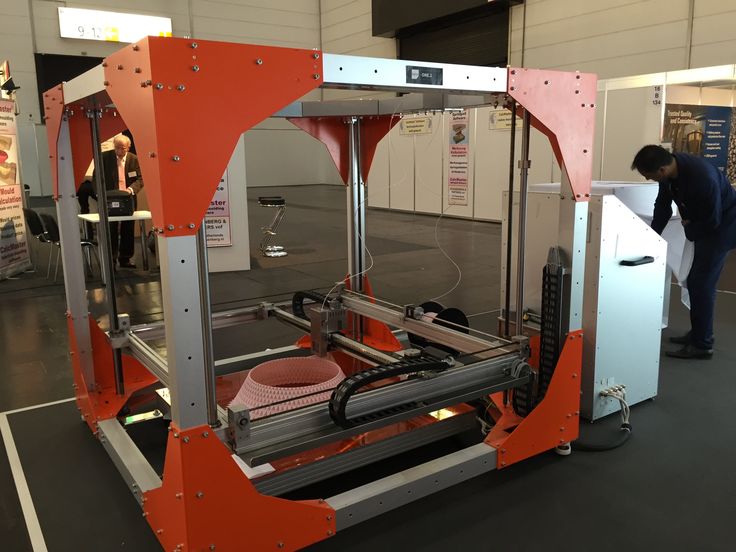
Learn About 3D Printing for Automotive & Transportation
How 3D printing is used in the automotive industry — Automarketolog.ru
As a rule, the production of individual prototypes and parts in the automotive industry is associated with high costs and complexities. Some production steps or tasks often have to be outsourced. Customization processes can take weeks or sometimes months, resulting in significant production costs. And the desire of many customers to produce ever more individual and personalized products poses additional challenges for car manufacturers. 3D printing helps solve many problems.
Faster, cheaper, more creative
Creating unique products is never an easy task. Businesses must create new designs and high-quality parts that set them apart from the competition, while balancing the costs of design, testing, and custom-made products.
Ringbrothers creates award-winning custom cars and a line of high quality, unique accessories.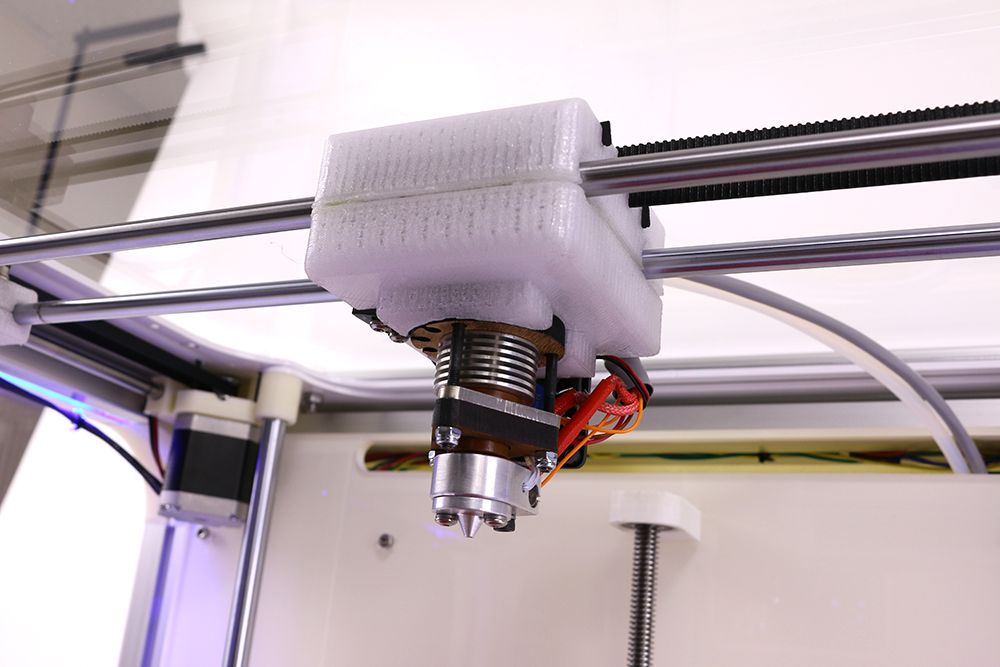 The Ring brothers have introduced 3D printing into their production for both prototyping and final parts. So with the help of 3D printing, a prototype door handle was created for the redesign of the Chevrolet 19 car.71 years for its subsequent manufacture. It was printed with a special fast printing resin, DraftResin, so the whole process didn't take long. And to mount the mechanism inside the rear-view mirrors, they simply printed the desired mount on the printer. If the mount were made in a standard way, then the costs would be enormous.
The Ring brothers have introduced 3D printing into their production for both prototyping and final parts. So with the help of 3D printing, a prototype door handle was created for the redesign of the Chevrolet 19 car.71 years for its subsequent manufacture. It was printed with a special fast printing resin, DraftResin, so the whole process didn't take long. And to mount the mechanism inside the rear-view mirrors, they simply printed the desired mount on the printer. If the mount were made in a standard way, then the costs would be enormous.
The main benefit of 3D printing is the space for experimentation and design improvement. All you need is any 3D modeling software based on your specific preferences. 3D printing speeds up the process between iterations - just a couple of mouse clicks and the design is adjusted. Prototypes printed on a printer are several times cheaper than those produced in a standard way, and rapid iteration leads to a faster time to market for the finished product.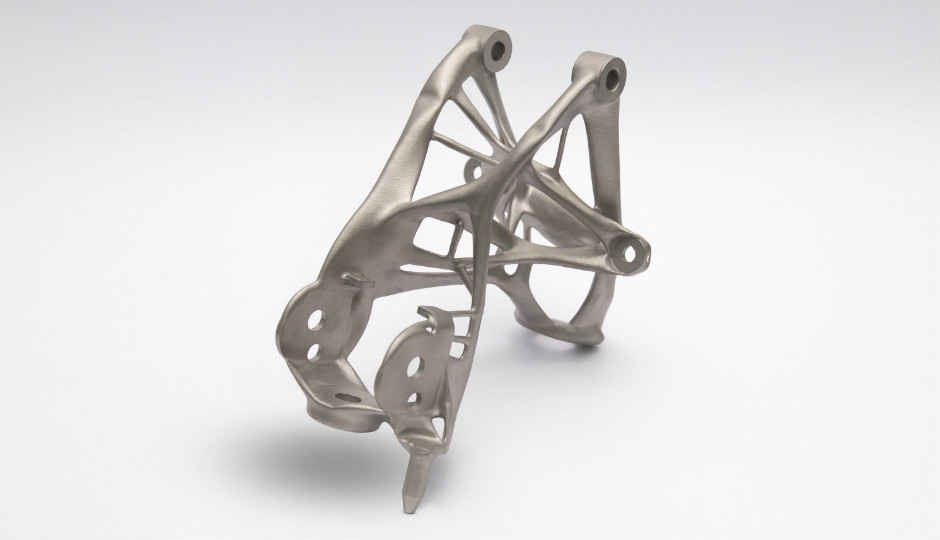
3 D Printing is the engine of the automotive industry
Major companies are already actively using 3D printing in manufacturing, as is one of Germany's most innovative companies, Brose. This company is one of the largest Tier 1 family car suppliers, working with 80 car brands, over 40 suppliers and 50 motorcycle manufacturers. Every second new car worldwide is equipped with at least one Brose product, including various mechatronic components and systems.
The company started introducing 3D printing 10 years ago. Brose's printer fleet is now equipped with a variety of SLS printing systems, from small desktop machines to the largest traditional industrial printers. They recently purchased a Formlabs floorstanding printer to expand their capabilities. The use of an SLS printer allowed them to achieve amazing part accuracy, they were able to print hundreds of parts with minimal post-processing, and as a result, parts printed on this printer were more affordable than similar ones printed on large machines. The company used the printer to produce smaller parts for car door interiors, opening and closing mechanisms, which must be rigid and resistant to stress, as a large number of parts can fit in one print run. The printer proved to be very easy to operate compared to the large industrial machines that Brose uses to print already large parts.
The company used the printer to produce smaller parts for car door interiors, opening and closing mechanisms, which must be rigid and resistant to stress, as a large number of parts can fit in one print run. The printer proved to be very easy to operate compared to the large industrial machines that Brose uses to print already large parts.
Saving money, not quality
Metal 3D printers are now popular, but for the most part they remain expensive, exotic, and extremely complex. However, resin 3D printers can sometimes do a much better job of producing metal parts. One of the easiest and highest quality ways to get metal parts out of a polymer 3D printer is electroplating (an electrochemical process in which metal ions are deposited in a thin layer on the surface of a part), an approach that our partners Volkswagen and Autodesk used to create a beautiful set of tire covers . The hubcaps were printed on a Formlabs SLA desktop 3D printer and then electroplated with a 0. 004" thick nickel layer. The production of such a part in a standard way or on a metal printer would cost the company several times more. In addition, galvanized surfaces significantly strengthen the base parts and increase the material's resistance to wear, UV and corrosion.
004" thick nickel layer. The production of such a part in a standard way or on a metal printer would cost the company several times more. In addition, galvanized surfaces significantly strengthen the base parts and increase the material's resistance to wear, UV and corrosion.
Investing in education
3D printers are becoming more and more popular in universities. For example, students at TUBerlin have printed injection molds for carbon fiber parts and printed over 30 final parts for a racing car. Universities often do not have expensive equipment in their arsenals, and in this case SLA printing was a one-stop solution. The presence of 3D printers in universities helps students develop creative thinking and provides indispensable experience in working with various materials. Formlabs, for example, has over 25 different plastic-like materials in its arsenal, allowing for a lot of experimentation and invention.
Custom parts made easy
Automotive manufacturers and OEMs use a large number of custom tooling that is specifically designed and optimized for end use. As a result, a lot of non-standard equipment and tools are made, which increases production costs. Some of them are now printable. This is how in-house printing helped Pankl Racing Systems, which specializes in the design and manufacture of engine and transmission components for racing cars, performance vehicles and aerospace, reduce production by weeks.
As a result, a lot of non-standard equipment and tools are made, which increases production costs. Some of them are now printable. This is how in-house printing helped Pankl Racing Systems, which specializes in the design and manufacture of engine and transmission components for racing cars, performance vehicles and aerospace, reduce production by weeks.
They printed custom parts for the production line instead of ordering them from a supplier and waiting weeks for an order. For example, special clamps for the production of motorcycle equipment or special grippers for transferring a part from one machine to another. The parts turned out to be even more resistant to stress and friction than the originals, so the company basically replaced some of the tooling for the production line with 3D-printed products.
Spare parts are no longer a problem
3D printing also helps to partially solve the problem with the availability of spare parts for cars and their production.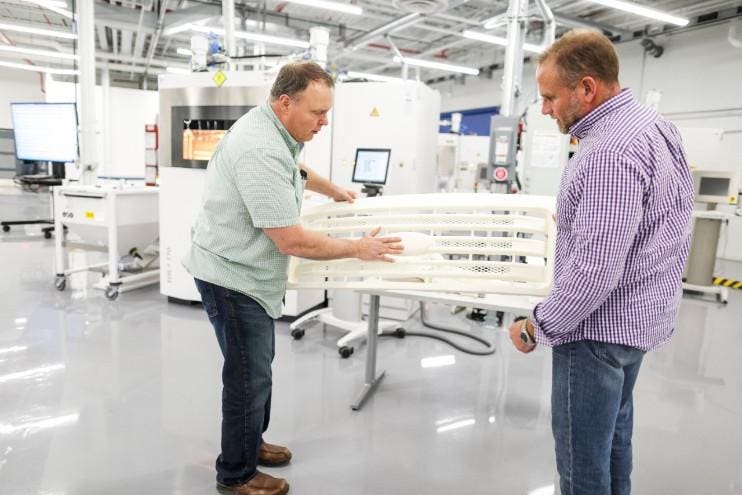 Vehicles are made up of thousands of parts, from tiny sensors to large body components. For many car companies, spare parts have historically been a problem. Demand for them is inherently unpredictable, so the cost of producing spare parts is sometimes a contentious financial decision.
Vehicles are made up of thousands of parts, from tiny sensors to large body components. For many car companies, spare parts have historically been a problem. Demand for them is inherently unpredictable, so the cost of producing spare parts is sometimes a contentious financial decision.
Now a 3D printer only needs a scan of the right part and access to different materials. Many of our customers, such as BMW or the already mentioned Ringbrothers, use their digital libraries to quickly access and print the desired part, for example, to create a Cadillac logo or a BMW LED spotlight cover. This is especially true for vintage cars - old designs can take on a new life. Updated parts for vintage cars - all this is possible with 3D printing now.
Perspective 3 D -Printing
In some cases, 3D printing technology pushes the boundaries and helps to achieve completely new possibilities in design and production, and in other cases, the technology reduces production costs and saves time.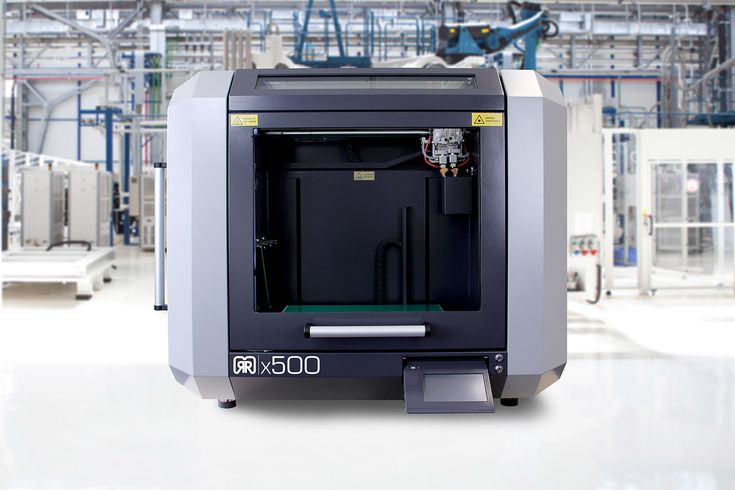 As awareness of the value of 3D printing continues to spread throughout the industry, and as the technology and facilities available become more versatile, this growing trend will continue.
As awareness of the value of 3D printing continues to spread throughout the industry, and as the technology and facilities available become more versatile, this growing trend will continue.
Automotive
VOLVO TRUCKS IS ONE OF THE LARGEST INTERNATIONAL TRUCKS MANUFACTURERS BASED IN THE SWEDISH CITY OF GOTHENBURG AND owned by AB VOLVO. THE FIRST VOLVO BRAND TRUCK LEFT THE CONVEYOR IN 1928, AND BY 2011 THE COMPANY EMPLOYED ABOUT 19 THOUSAND EMPLOYEES IN 15 COUNTRIES. VOLVO TRUCKS MANUFACTURES AND SELLS OVER 100,000 VEHICLES EVERY YEAR.
According to Stratasys, Volvo Trucks has recently been able to reduce lead times for critical assembly tools by more than 94% - and all thanks to the introduction of additive manufacturing methods into the process of creating engines at a factory in France, in the city of Lyon. This plant produces various engine models for Volvo Group companies, including Renault Trucks.
Pierre Geny, Production Director at Volvo Trucks, says the use of Stratasys technology has helped to significantly reduce the development and production time for a range of tools. It used to take the company 36 days to produce elements from metal, but now they are produced in just two days from ABSplus thermoplastic using the Stratasys Fortus 3D manufacturing system.
It used to take the company 36 days to produce elements from metal, but now they are produced in just two days from ABSplus thermoplastic using the Stratasys Fortus 3D manufacturing system.
Zhenya says that the savings in the manufacture of small production tools or parts with special designs have also proved to be extremely significant. We are talking about 100 euros per cm3 when using metal versus 1 euro per cm3 when making tools from thermoplastic ABS.
“Stratasys' 3D printing technology has had a huge impact on our work,” says Jeni. “We have an unprecedented opportunity to produce an almost unlimited range of functional instruments in a very short time. This allows us to experiment and be more creative to improve the manufacturing process.” Using a Fortus 3D manufacturing system purchased from CADvision, distributor of Stratasys, Volvo Trucks produced over 30,000 different tools in three months. The 3D-printed items are designed for use on the assembly line, with wear-resistant and lightweight clamps, clamps, supports and ergonomic tool holders as key features.
“To date, all the elements that we have produced using 3D printing are 100% fulfilling their intended purpose. This is a very important point from a practical point of view, which also inspires confidence among production operators, and these are people who are used to believing that only metal parts can be reliable,” says Jean-Marc Robin, technical manager of Volvo Trucks.
Robin noted that the use of 3D printing in the process of developing production tools has another advantage - it allows creators to react and make changes faster. The new method also helps eliminate the potential waste that often occurs when final changes are needed before tools are used on the production line.
“Operators are now approaching our 3D printing team with individual requests for a custom clamp or holder design that they need to solve a specific production problem,” says Roben. “In terms of time and costs, the new process is incomparable with traditional methods. On those rare occasions when the design specifications of a metal tool made "the old fashioned way" turned out to be inaccurate, we had to start over a long and expensive manufacturing process.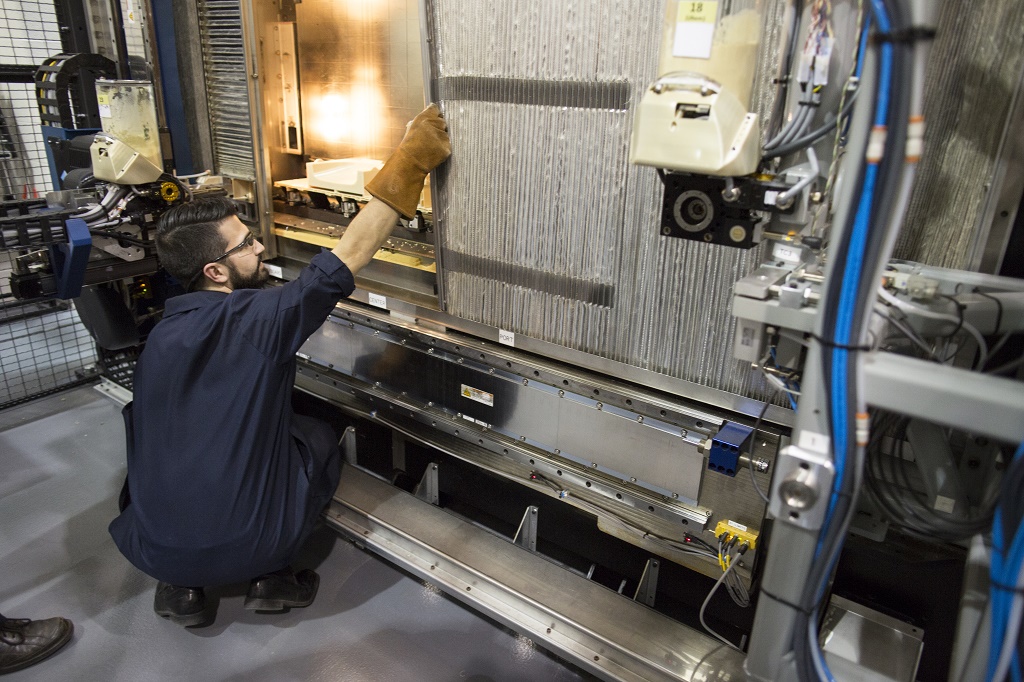 With 3D printing, we can simply change the characteristics of the model and 3D print the object again in a few hours.”
With 3D printing, we can simply change the characteristics of the model and 3D print the object again in a few hours.”
Andy Middleton, senior vice president and general manager of Stratasys EMEA, says that using additive manufacturing methods to make tools and devices is often the only viable solution because traditional methods are expensive or have design limitations.
NEXT GENERATION MERCEDES-BENZ S-CLASS TO GET AN ULTRA-MODERN INTERIOR
Company Chief Designer Mercedes-Benz Jan Kaul , which specializes in car interiors, has revealed some interesting details about the next S-Class . According to the ego, the interior of the new generation of the flagship from Mercedes-Benz will be very technologically advanced, and some details will be printed on a 3D printer that is now fashionable.
But the designer also added that 3D printing is one of the technologies being considered by management. Also, 3D printing is not a cheap process, so the feasibility of this undertaking is also being considered.
Also, 3D printing is not a cheap process, so the feasibility of this undertaking is also being considered.
“ After all, thousands of such components need to be prepared and the costs match the quality ”
summed up Jan Kaul.
In addition, the designer said that the new generation of S-Class will introduce new systems for interaction between the driver and the car. As an example, Kaul named the gesture control system, which has now become popular on tablets and smartphones. But serious and long-term manipulations of gestures will not be trusted, so as not to distract the person behind the wheel from the road. Also, the chief designer of Mercedes-Benz hinted that the new flagship of the concern should be expected in 2018 .
AUDI HAS INSTALLED SLM 280HL 3D METAL PRINTER
The German carmaker AUDI announced the start of using the SLM 280HL 3D powder metal printer from SLM Solutions.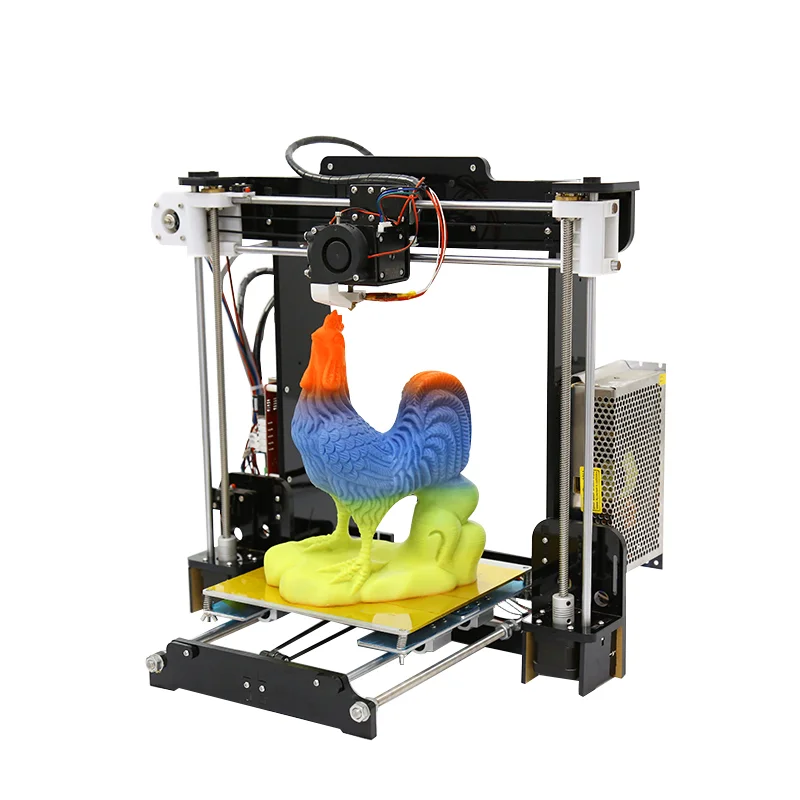 The machine will be used for the production of aluminum parts by the AUDI Technical Development Department.
The machine will be used for the production of aluminum parts by the AUDI Technical Development Department.
AUDI representatives announced plans to implement additive technologies in their production in November 2015. In May 2016, the first industrial 3D printer, a metal SLM 280HL, was purchased. This is an installation for selective laser melting of metal powders with a working chamber 280x280x365 mm.
Technical Development is an AUDI division based in Giessen, Germany. The main activity is the development and testing of new technologies, materials and technological chains. The department mainly works on improving the structure of the chassis, body, transmission, it is equipped with its own aluminum casting line, as well as equipment for processing and testing metal parts.
The SLM 280HL 3D printer will be integrated into existing process chains for the production of aluminum parts. This metal powder melting system is equipped with two fiber optic lasers, which provides a construction speed of up to 55 cm 3 /hour. The layer thickness can be from 20 to 75 microns.
The layer thickness can be from 20 to 75 microns.
According to the automaker, the main goal of using 3D printing is "the efficient development of topologically optimized parts in small batches, as well as the introduction of new advanced technologies."
AUTOMOTIVE GIANTS BMW AND JAGUAR LAND ROVER — AS WELL AS EFFICIENT PARTS SUPPLIERS SUCH AS MINIMIZER — HAVE DISCOVERED THAT NOTHING DOES SPEED UP A VEHICLE, THIS0095
In the summer of 2008, Jaguar Land Rover installed an Objet Connex500 3D printer. This printer was chosen because it can work with multiple materials at the same time, which makes it possible to obtain excellent models due to the combination of their special properties.
Two of the world's leading brands, Jaguar and Land Rover, have been owned by the same owner since 2000; they were originally part of the Ford Motor Company, and are now the British wing of the Indian conglomerate TATA Group.
These two car brands initially followed completely different principles. The first affordable sports car capable of reaching speeds of 160 km/h was the first Jaguar SS100, launched in 1935. Its classic shape and high performance inspired a number of generations of Jaguar cars, distinguished by their speed, comfort and sporty look.
In contrast, the first model of another brand (Series 1 Land Rover 80), which appeared in 1948, had completely different characteristics and was positioned as a “universal vehicle” of high cross-country ability and no frills in design. Jaguar Land Rover (JLR) currently produces eight vehicle lines. To keep all of these models in the premium segment, almost 20% of Jaguar Land Rover's staff is involved in product development using the latest CAD techniques, with prototypes built in-house to speed up testing. In addition to CNC modeling equipment and a full metalworking and tooling shop, there are also several rapid prototyping devices based on stereolithography, laser synthesis and polymer sputtering technologies.
Jaguar Land Rover purchased an Objet Connex500 printer in 2008 to expand its rubber-based rapid prototyping capabilities. The ability to model directly from elastic CAD data to produce working mechanisms was critical to shortening development cycles. To test the capabilities of the Objet Connex printer, the first task was to fabricate a one-piece Range Rover Sport dashboard vent assembly. When modeling the body and ventilation blades, rigid materials were used, and elastic materials were used for the control buttons and air damper. Jaguar Land Rover employees were able to print a one-piece ventilation assembly as a fully working part in one operation. After printing, the model was removed from the printer, cleaned and immediately tested, while all the hinges of the blades turned out to be working, and the control button corresponded to the real one both in appearance and in touch.
The printer is based on inkjet 3D printing technology. Spraying two different substances in a given combination over the matrix structure makes it possible to create both rigid and elastic materials with different mechanical and physical properties, as well as with different coatings. Over 5,000 hours of operation on Jaguar Land Rover's Objet Connex printer, more than 2,500 parts were produced using this technology and 600 kg of rubber were used. A testament to the performance and reliability of the printer is the fact that throughout its life it has required only minor maintenance and the replacement of only five printheads at recommended intervals to maintain optimal quality.
The number of parts produced at Objet Connex grew steadily as the design team found new ways to use the 3D printer's capabilities. This number is still only a fraction of the 30,000 prototypes that Jaguar Land Rover manufactures every year, most of which are produced by laser fusion. But when it comes to elastic parts, it's turning in favor of the Objet Connex printer, which is now responsible for one-third of all production. Due to its speed and ease of post-processing, Objet Connex is often used to produce rigid specimens from a single material type. The multi-material mode is used to perform a variety of tasks. Among them is also the development of design and human-machine interface - buttons, switches and key fobs.
Over-moulding is also an important part of the Objet 3D printing technology. The two materials are used together but do not mix, allowing for the creation of, for example, a lid with a rubber seal. After cleaning, such a part can be immediately checked for conformity and functionality. Other key areas of use for Objet Connex are the development of door seals and hoods using only Tango Black Plus resilient material and, more recently, functional test parts.
Jaguar Land Rover's design department uses the Objet Connex the most. More than half of all samples produced on the Objet 3D printer are used to approve new solutions in the design studio.
A good example is the telescopic headlight washer, which extends and cleans the headlights every fifth windshield washer pass. Components printed on Objet Connex have proven to be durable enough under rigorous testing to allow the design to be fully tested before moving on to the costly machine manufacturing step.
The different characteristics of the Objet Connex manifest themselves in different ways in all of the above applications, but in general, the benefits of the printer for Jaguar Land Rover are: high accuracy and dimensional control in the production of prototype parts, as well as shortened production cycles due to ease of operation, reduced time manufacturing and simple cleaning procedure. Frankly, the Objet Connex 3D printer impressed the company with its ability to produce directly from CAD data that would otherwise take too much time or cost.
TOYOTA INTRODUCED A VEHICLE WITH 3D PRINTED PARTS It differs from conventional models not only in its futuristic design, but also in the use of components made on a 3D printer.
With its new brainchild, Toyota plans to win the sympathy of a young audience, the so-called generation Z. The automaker involved students of the International Center for Automotive Research at Clemson University (CU-ICAR) in South Carolina to create uBox.
The project participants were faced with the task of coming up with a practical, inexpensive car with a spectacular appearance that would be ideal for students, young professionals and entrepreneurs. It should be equally good for both work and entertainment. To conquer the target audience, the above three characteristics are not enough. Young people also appreciate originality and ergonomics. Therefore, the developers thought about the possibility of simply adapting a car to the needs of a particular buyer - customization.
Ubox turned out to be bright and unusual in appearance. The salon is able to transform for the carriage of goods and passengers. The car is small in size, while even a bicycle can easily fit inside. The glass roof with ultra-strong carbon fiber supports is made by pultrusion.
A number of uBox components are 3D printed to enhance customization. Thanks to this, they can be easily changed at the request of the client. In particular, this applies to ventilation grilles, dashboard parts and door trim. In the future, Toyota intends to create an online platform where uBox owners can share ideas for transforming 3D printed parts.
The creators of ubox also plan to equip the car with a set of sockets. Their power should be enough not only to charge gadgets, but also to power electrical appliances.
The uBox is scheduled to go on sale in 2020, by which time the machine may receive a number of unusual features.
ALFA ROMEO USES 3D PRINTING TECHNOLOGIES
At the World Fair, which was recently held in Milan, many innovative solutions were presented that could simplify the production processes in the automotive industry in the future. As it turned out, 3D printing technologies, even at the present stage of development, are already deeply connected with production in some companies, among which you can meet such popular brands as Fiat, AlfaRomeo, Chrysler, BMW, Bentley and many others.
Alfa Romeo is one of the brands that is part of a single automobile concern that produces not only cars of the same name, but also such well-known brands as Dodge, Jeep and Ferrari. Most recently, they announced a new model, which will soon enter mass production and its name is Alfa Giulia. The main goal of "Julia" is to create a worthy competitor for BMW and Audi, not only in terms of appearance, but also the internal component.
One of the elements that gives Alfa Romeo its personality is the grille, which combines aggressiveness and elegance, and in the latest model it is created using 3D printing technology.
The Alfa Giulia grille is a one-piece design with no joints to maintain maximum reliability during the harshest operating conditions. For printing, a printer was used that uses SLA technology, and the first device was purchased in Italy.
Product development manager Roberta Sampieri explained that the speed of production will increase as designers master all the intricacies of 3d printing technology, and the use of innovative methods will attract even more specialists who can surprise with their developments and take part in the creation of a truly complex projects.
FORD TESTS 3D PRINTING ON MASS MODELS
The main application of 3D printing in the automotive industry is the rapid production of prototype car parts, assembly mock-ups, in rare cases, concept or small-scale car body parts from exotic companies. And Ford Motor executives believe that 3D printing will win its place in mass production. The key to the success of the technology is the speed of the process. Recently, Ford has partnered with the American company Carbon3D. Now the Ford workers have spoken about the first results of joint experiments
For the Ford Focus Electric model, the company created the elastomer pads (left) needed to manage cables in the car doors with a new high-speed method, and for the Transit Connect van, a small bumper detail (right). They have been tested and proved to be no worse than conventional similar parts.
Carbon3D has developed the so-called continuous liquid phase production technology (CLIP), which consists in curing resin layers under ultraviolet rays (all the subtleties, of course, are not disclosed). According to Carbon3D, this method is 25 to 100 times faster than competing 3D printing options.
When creating an unnamed new car, Ford engineers had a snag with a not very good location for the oil filler neck. CLIP 3D printing allowed us to solve the problem very quickly: polymer parts for a curved filler tube were immediately "grown" from a digital model.
Personal connections and acquaintances are important in business. Last June, Alan Mulally, who was CEO of Ford Motor Company from 2006 to 2014, joined the Board of Carbon3D. True, the first joint experiments of these two firms began six months ago, but obviously not without the filing of Alan.
More importantly, Ford made sure that the resulting parts meet a whole bunch of requirements for strength and endurance, resistance to high temperatures. Fordovtsy report that while they intend to use the CLIP technology for experiments and building prototypes. But in the future, Raj Nair, Ford's vice president of engineering, said the method could be applied to mass-produced automotive parts.
Christian von Königsegg, the founder of Koenigsegg, introduced one of the most exotic units of the One:1 hypercar last year. This is a variable geometry turbocharger, the body of which is made using 3D printing technology.
According to Koenigsegg, 3D printing is a great fit for a small-scale model, also for economic reasons. It would be more expensive to make injection molds and the castings themselves, it would require more effort to provide intricate shapes for the internal cavities of the case. The company has also 3D printed titanium exhaust tips for the One:1 coupe.
BMW TO USE HP JET FUSION 3D PRINTER FOR SERIES PRODUCTION AND CUSTOMIZATION
BMW has entered into an agreement with Hewlett Packard that will make the Bavarian company one of the first users of HP's latest additive manufacturing system, Jet Fusion, which premiered yesterday. The German automaker intends to use 3D printing for serial and customized production of automotive components.
Hewlett Packard is open for applications for its latest development, the Jet Fusion 3D Printing Solution, an industrial 3D printing system valued at $130,000-$200,000 depending on configuration. Designed by the pioneer of inkjet office printing, this 3D printer promises users a number of benefits, including high speed, a broad consumable developer base, and excellent print resolution.
The German automaker BMW hastened to join the queue, having published serious plans to introduce 3D printing into its own production processes. According to the head of the BMW Additive Manufacturing Center, Jens Oertel, the company has followed the development of the HP Jet Fusion system from the very beginning, and is now ready to put the novelty into action: “As one of the first partners, we had the opportunity to observe the constant evolution of the project - from the presented five years back from a prototype to a machine that is now available and commercially ready. ”
BMW hasn't disclosed exactly what parts it plans to produce with Hewlett Packard 3D printers, but it does emphasize its willingness to use the system not only for rapid prototyping but also for finished product production. Based on the dimensions of the working area of the device, which is 406x305x406mm, we can assume that BMW will use the latest 3D printers to produce relatively small plastic components with an emphasis on customization. This conclusion is supported by the company's claims that the greatest impact from the use of the HP Jet Fusion system will be seen on the example of vehicles produced in limited quantities and one-of-a-kind copies. BMW already has experience with additive technologies such as selective laser fusion (SLM). Last year, the company printed hydraulic pumps for sports cars in the German DTM racing series, and also switched to additive manufacturing of spare parts for older models off the assembly line.
Whatever the plans of the German company, its participation will play an important role in supporting the new HP project. Luckily for Hewlett Packard, BMW is showing a willingness to jump head first into new technology. “BMW is a pioneer in terms of introducing innovative additive manufacturing technologies, especially in the areas of rapid prototyping of concept vehicles and pre-production production,” Ertel explains. "We see the partnership with HP as an opportunity to explore new 3D printing technology applicable to part mass production and customization."
Recall that in March of this year, BMW demonstrated a concept car with 4D printed elements that allow you to change the shape of the body and dashboard. In addition to the ongoing developments in the automotive industry, BMW is also using 3D printing technologies in other areas: in April, the company's designers presented their own design of a racing sidecar with a carbon fiber composite structure. The wheelchairs were used by six athletes from the US team at the last Paralympic Games in Rio de Janeiro.
BENTLEY EXP 10 SPEED CONCEPT 6
Bentley Motors is making a name for itself by using 3D printing technology to manufacture its vehicles. 3D printing is used in the production of key car design details.
Bentley uses all the same elements from standard manufacturing processes, 3D printed and used in the creation of full-fledged concept cars. Last year there was information that the company uses 3d printers from Stratasys.
The founders of Bentley Motors, Walter Owen Bentley and Horace Millner Bentley, made their living selling French cars before the First World War, but their real goal was to create their own line cars.
By 1921 Bentley Motors Ltd. created their first car, and after the presentation, Bentley became associated with sophisticated luxury and precision in the manufacture of parts.
The design for the EXP 10 Speed 6 concept car is the forerunner of future production upgrades. Various 3D printing technologies are used in the production of functional parts.
Metal 3d printing has been used to create the grille, exhaust pipe, door handles and side vents.


